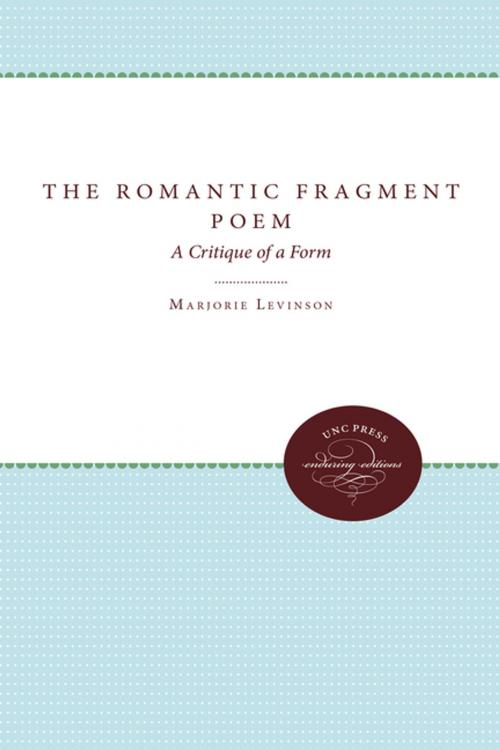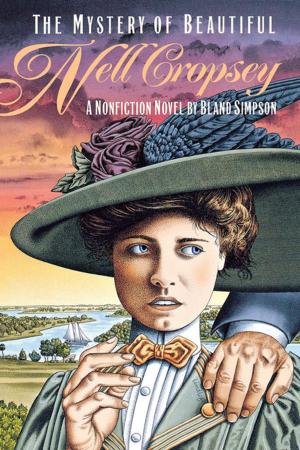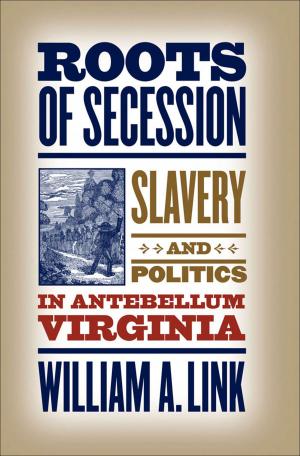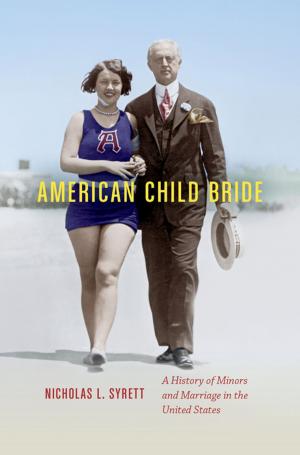The Romantic Fragment Poem
A Critique of a Form
Fiction & Literature, Literary Theory & Criticism, Poetry History & Criticism| Author: | Marjorie Levinson | ISBN: | 9781469610177 |
| Publisher: | The University of North Carolina Press | Publication: | November 1, 2017 |
| Imprint: | The University of North Carolina Press | Language: | English |
| Author: | Marjorie Levinson |
| ISBN: | 9781469610177 |
| Publisher: | The University of North Carolina Press |
| Publication: | November 1, 2017 |
| Imprint: | The University of North Carolina Press |
| Language: | English |
The fragment poem, long regarded as a peculiarly Romantic phenomenon, has never been examined outside the context of thematic and biographical criticism. By submitting the unfinished poems of the English Romantics to both a genetic investigation and a reception study, Marjorie Levinson defines the fragment's formal character at various moments in its historical career. She suggests that the formal determinancy of these works, hence their expressive or semantic affinities, is a function of historical conditions and projections.
The English Romantic fragment poems share not so much a particular mode of production as a myth of production. Levinson pries apart these two dimensions and analyzes each independently to consider their relationship. By reconstructing the contemporary reception of such works as Wordsworth's "Nutting," Coleridge's "Christabel" and "Kubla Khan," Shelley's "Julian and Maddalo," and Keats's Hyperion fragments, and juxtaposing this model against dominant twentieth-century critical paradigms, Levinson discriminates layers, phases, and kinds of intentionality in the poems and considers the ideological implications of this diversity.
This study is the first to investigate the English Romantic fragment poem by identifying the assumptions -- contemporary and belated -- that govern interpretative procedures. In a substantial summary chapter, Levinson reflects upon the meaning and effects of these assumptions with respect to the facts and fictions of literary production in the period and to the processes of canon formation.
Originally published in 1986.
A UNC Press Enduring Edition -- UNC Press Enduring Editions use the latest in digital technology to make available again books from our distinguished backlist that were previously out of print. These editions are published unaltered from the original, and are presented in affordable paperback formats, bringing readers both historical and cultural value.
The fragment poem, long regarded as a peculiarly Romantic phenomenon, has never been examined outside the context of thematic and biographical criticism. By submitting the unfinished poems of the English Romantics to both a genetic investigation and a reception study, Marjorie Levinson defines the fragment's formal character at various moments in its historical career. She suggests that the formal determinancy of these works, hence their expressive or semantic affinities, is a function of historical conditions and projections.
The English Romantic fragment poems share not so much a particular mode of production as a myth of production. Levinson pries apart these two dimensions and analyzes each independently to consider their relationship. By reconstructing the contemporary reception of such works as Wordsworth's "Nutting," Coleridge's "Christabel" and "Kubla Khan," Shelley's "Julian and Maddalo," and Keats's Hyperion fragments, and juxtaposing this model against dominant twentieth-century critical paradigms, Levinson discriminates layers, phases, and kinds of intentionality in the poems and considers the ideological implications of this diversity.
This study is the first to investigate the English Romantic fragment poem by identifying the assumptions -- contemporary and belated -- that govern interpretative procedures. In a substantial summary chapter, Levinson reflects upon the meaning and effects of these assumptions with respect to the facts and fictions of literary production in the period and to the processes of canon formation.
Originally published in 1986.
A UNC Press Enduring Edition -- UNC Press Enduring Editions use the latest in digital technology to make available again books from our distinguished backlist that were previously out of print. These editions are published unaltered from the original, and are presented in affordable paperback formats, bringing readers both historical and cultural value.















